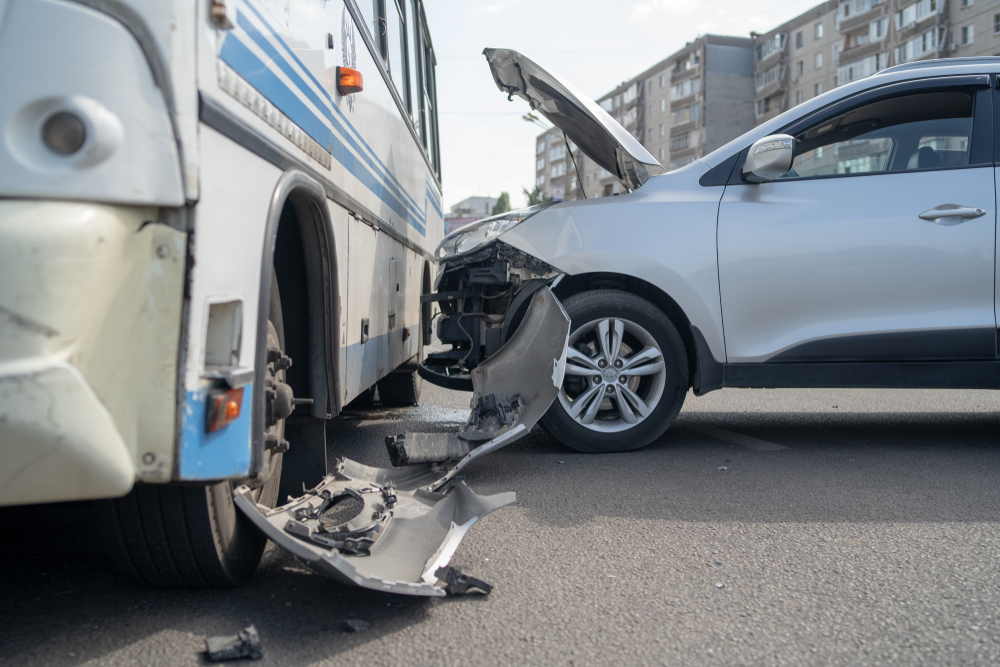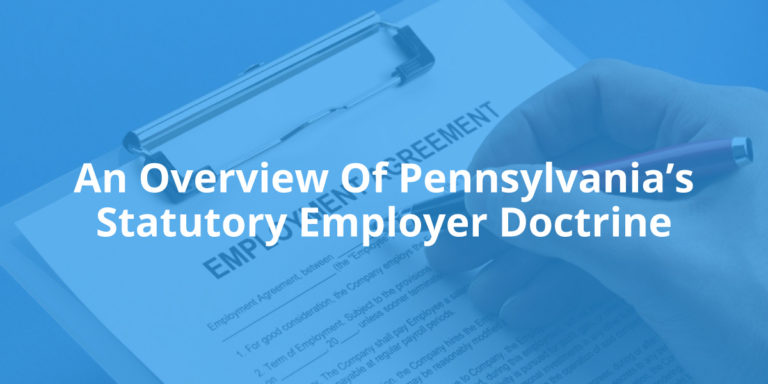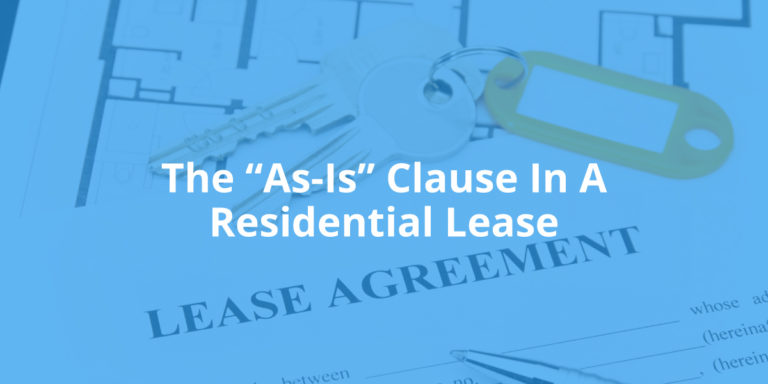
How Do I Determine the Value of My Bus Accident Injury Claim?
- Posted on August 1, 2023
Imagine it’s a busy weekday morning when an eighteen-wheeler crashes into a bus loaded with commuters, throwing passengers out of their seats, leaving them bruised and battered. Many victims sustain severe injuries that forever impact their lives, including head injuries, burns, and other grievous injuries.
Naturally, the injured parties must ask themselves:
"How Do I Determine the Value of My Bus Accident Injury Claim?"
In this comprehensive guide, Mattiacci Law explains victim rights and options. We outline the steps needed to estimate the value of a claim, beginning with a detailed examination of economic damages, followed by expert advice on estimating future monetary damages.
Next, we discuss non-economic damages, encompassing the intangible losses accident victims suffer, such as pain and suffering, emotional distress, and loss of enjoyment of life. We also touch on the rare circumstances where punitive damages apply.
The guide also explains Pennsylvania’s comparative negligence law, a salient factor in personal injury cases. We illustrate these concepts with an example of a bus accident claim valuation, demonstrating the importance of accurately tallying both economic- and non-economic impacts.
Lastly, we detail insurance policy limitations and sovereign immunity, which place a ceiling on the value of some bus accident claims.
Determining Your Claim’s Value in Four Steps
When estimating a claim, it’s important to include all potential damages by following the below four steps:
- Tally your economic damages
- Estimate non-economic damages
- Determine if punitive damages apply
- Determine the impact of comparative negligence
Step 1: Tally Your Economic Damages
Economic damages in a personal injury claim refer to the quantifiable monetary losses suffered due to the incident and cover various expenses and losses.
Available Economic Damages in a Pennsylvania Bus Accident Case
When pursuing a bus accident claim, a personal injury lawyer tabulates all expenses, including the following:
- Medical bills, including costs for treatment immediately after the accident and ongoing care.
- Ambulance bills
- Medications
- Hospital costs, including expenses for hospital admission, surgeries, and other treatments.
- Rehabilitation therapy, such as expenses for physical, occupational, or speech therapy.
- Lost wages
- Lost salary
- Lost business income
- Other lost income, including bonuses, commissions, and side hustles
- Related expenses, including any other out-of-pocket costs directly related to the injury, such as expenses of assistive devices or modifications to the home for wheelchair accessibility.
The Importance of Estimating Future Economic Damages
Accurately estimating future economic damages in a Pennsylvania bus accident case is paramount. Severe, long-lasting, and permanent injuries and disabilities come with expenses that continue long after a personal injury claim ends. Underestimating future damages can leave an injury victim with inadequate compensation and no recourse.
For example, a bus accident victim might need ongoing treatments, such as surgeries, medications, and rehabilitative care. In some cases, home help or nursing home care costs can go into the hundreds of thousands or millions over time.
Likewise, it's crucial to account for the loss of future income. Future income may include the salary or wages the victim would have earned and other impacted revenue sources like business income, bonuses, or commissions. If the accident permanently diminishes the victim's capacity to work, lost future income can add up to his or her entire earning capacity to retirement and beyond.
Step 2: Estimate Non-Economic Damages
Unlike economic damages–which compensate for readily quantifiable losses–non-economic damages address the intangible aspects of an accident's impact on a victim's life.
Non-economic damages address the physical pain and emotional trauma inherent in a debilitating injury. Compensation should consider the impact on the victim's daily living, relationships, and quality of life. They represent a crucial component of a personal injury settlement, reflecting the full extent of the victim's suffering.
Available Non-Economic Damages
The law creates specific categories for non-economic damages, and any compensation sought for them must fit into one of these categories.
Pain and Suffering
Pain and suffering damages include physical pain and mental anguish. The law bases awards for these damages according to the severity of the pain and the duration of the suffering.
Emotional Distress
Emotional distress compensation covers the psychological impacts of the accident, such as anxiety, depression, insomnia, or post-traumatic stress disorder.
Loss of Enjoyment of Life
Loss of enjoyment of life pertains to the victim’s decreased ability to enjoy daily activities, hobbies, exercise, and other aspects of a full life.
Loss of Consortium
This category compensates for the negative effects on the victim's relationship with their spouse, including loss of companionship, affection, comfort, and sexual relations.
Step 3: Determine if Punitive Damages Apply
Punitive damages are rarely awarded in personal injury cases because they punish the defendant rather than compensate the victim. Since most personal injuries result from negligence rather than malice, punitive damages are usually unwarranted.
However, a court may award punitive damages if the defendant’s actions were heinous. For instance, in a bus accident case, if the court finds that the driver deliberately caused a collision as part of an insurance fraud, punitive damages may apply. In this instance, the defendant’s actions go beyond simple negligence and constitute criminality.
Step 4: Determine the Impact of Comparative Negligence
Pennsylvania law follows the doctrine of comparative negligence, where courts must assign a degree of fault to all involved parties. A comparative negligence finding directly impacts the value of a personal injury claim, as the claimant's compensation is reduced proportionately to the court’s ruling on the degree of fault.
For example, if the court finds the plaintiff 30% at fault for a bus accident and the plaintiff seeks $100,000 in damages, the victim wins only $70,000.
Notably, Pennsylvania has a 51% bar rule. This rule stipulates that a plaintiff cannot recover damages if more than 51% at fault for the accident. The 51% bar rule significantly influences negotiations and trials because defendants and their insurers often attempt to assign a false degree of fault to meet this threshold and destroy the plaintiff’s claim.
Philadelphia Bus Accident Claim Valuation Example
Consider a hypothetical case of a Pennsylvania bus accident where the plaintiff sustains severe injuries requiring surgery and extensive rehabilitation. The victim also suffers chronic pain and disability. He cannot work for six months and is limited to part-time employment for the subsequent six months.
In this case, the plaintiff’s economic damages are likely straightforward. For instance, medical expenses, such as surgery, medication, and rehabilitation therapy, might total $100,000. At the same time, six months out of work and six months of enforced part-time work may cost the plaintiff $45,000. Therefore, the total economic damages are $145,000.
Assessing non-economic damages is more complex because they vary greatly based on individual circumstances and do not correspond to a medical bill, paystub, or other easily documented harm.
For instance, suppose the plaintiff’s chronic pain and diminished capacity severely impact his quality of life. Before the injury, he led an active lifestyle, enjoying outdoor activities and spending quality time with his family. His injuries and chronic pain have left him too crippled to engage in physically demanding activities, and he must miss cherished family events, such as a daughter’s wedding.
A personal injury attorney would use medical records, testimony from family and friends, the plaintiff’s testimony, and other proofs to establish a reasonable estimate for non-economic damages. Considering the severe and chronic nature of the injury in this example, the attoreny may negotiate non-economic damages of $200,000.
Therefore, the total bus accident claim would be $330,000.
Remembering that every case is unique and claim values vary based on numerous factors is critical.
Other Factors That May Limit the Claim’s Value
Some cases face a limit on how much the plaintiff can collect, such as when the damages exceed insurance policy limitations or the law limits compensation because of sovereign immunity.
Insurance Policy Limitations
Insurance policy limits greatly influence the value of a bus accident claim as they set the maximum amount an insurance company is obligated to pay for a specific incident. The injured party may not collect full compensation if damages exceed the policy's limit.
For example, if a victim incurs $200,000 in damages but the bus company's policy limit is $100,000, the insurance would only cover half of the damages. In such cases, victims might be able to seek additional compensation through other avenues, such as suing the liable party directly or seeking coverage from their insurance.
Determine If Damages Are Limited by Sovereign Immunity in Philadelphia
Damage awards from bus accidents where a government entity is liable are limited in Pennsylvania by sovereign immunity. Sovereign immunity is a legal doctrine that protects state and federal governments from lawsuits. However, there are exceptions to this rule.
In Pennsylvania, governments have waived sovereign immunity in certain situations according to the Pennsylvania Sovereign Immunity Act. This waiver allows individuals to sue government entities in certain circumstances, including instances of negligence involving the operation of buses.
However, plaintiffs still face limitations on the damages they can recover. For instance, as of 2023, the sovereign immunity liability limit for the Commonwealth of Pennsylvania stands at $250,000 per claimant and $1,000,000 per incident.
The limitations vary depending on the government entity involved and the nature of the claim, so it's essential to consult a knowledgeable personal injury attorney.
Understanding the value of your bus accident claim can be a complex process. Navigating this process alone is daunting and dangerous. Legal guidance is essential.
At Mattiacci Law in Philadelphia, our experienced attorneys are ready to assist you every step of the way. Don't hesitate to seek legal counsel if you or a loved one have been in a bus accident. Time is of the essence. Each day bus accident victims delay consulting an attorney, the more likely that key evidence will be lost.
Additionally, Pennsylvania enforces a two-year statute of limitations for bus accidents. The timeframe to file a complaint against a municipality, country, or other government agency is just six months. Do not delay.
Consult with a Philadelphia Bus Accident Lawyer
Contact Mattiacci Law today for a bus accident claim consultation. Our legal fighters are ready to enter the arena on your behalf. Mattiacchi Law never gives up. We litigate until our clients receive every penny to which they are entitled.
Related Content: How Long Does It Take Philadelphia Car Accident Lawyers to Settle a Case in PA?
Categories
- Bicycle Accidents
- Brain Injuries
- Burn Injuries
- Bus Accidents
- Car Accidents
- Construction Accidents
- COVID-19
- Dog Bites
- Drunk Driving
- Injury Insurance
- Medical Malpractice
- Motorcycle Accidents
- Pain and Suffering
- Pedestrian Accidents
- Personal Injury
- Premises Liability
- Product Liability
- Rideshare Accidents
- Slip and Fall
- Truck Accidents
- Worker's Compensation
- Wrongful Death



